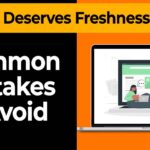
In today’s digital world, attracting organic traffic is the backbone of sustainable online growth. Unlike paid ads, organic traffic keeps your website alive and thriving over time without constant spending.
This guide will provide you with practical, step-by-step strategies to boost your visibility, rank higher in search engines, and create a long-term stream of visitors.
Table of Contents
What Is Organic Traffic and Why Does It Matter?
Organic traffic means visitors who reach your website through free search engine results. When someone types a query on Google or Bing and clicks on your site without seeing an ad, that’s organic traffic. It comes from two main factors:
- High-quality, relevant content.
- Solid Search Engine Optimization (SEO) practices.
Unlike paid traffic that stops when your ads do, organic traffic delivers consistent value over months or even years. For example, a well-optimized blog post or landing page can rank in search engines and attract visitors long after it’s published. This makes organic traffic essential for:
- Building long-term growth.
- Reducing dependency on advertising.
- Establishing authority and trust in your niche.
Proven Strategies to Boost Organic Traffic
Perform Targeted Keyword Research
Keyword research is the foundation of successful SEO. By identifying keywords your audience actively searches for, you can tailor your content to meet their needs.
- Find relevant keywords: Use tools like Google Keyword Planner, SEMrush, or Ahrefs to discover keywords with good search volume.
- Target long-tail keywords: Phrases like “how to drive organic traffic to a website” are less competitive and more likely to convert.
- Understand user intent: Focus on keywords that match what users are looking for—informational, commercial, or transactional.
Pro Tip: Group keywords into topics and create comprehensive content that addresses multiple queries.
Optimize On-Page SEO for Better Rankings
On-page SEO makes your content easier to find and understand for both users and search engines. Prioritize these elements:
- Title Tags & Meta Descriptions: Write compelling, keyword-rich titles and descriptions that encourage clicks.
- Header Tags (H1, H2, H3): Break your content into sections using clear headings.
- Optimize Images: Add descriptive alt text to images and compress file sizes to boost page speed.
- URL Structure: Keep URLs short, descriptive, and include your target keyword.
Example:
Bad URL: www.sitename.com/article123
Good URL: www.sitename.com/how-to-increase-organic-traffic
Publish High-Value, Optimized Content
Content is the driving force behind organic traffic. Search engines reward websites that publish helpful, valuable, and optimized content consistently.
- Focus on evergreen content: Guides, tutorials, and FAQs remain relevant and continue driving traffic over time.
- Solve user problems: Address pain points or questions your audience has.
- Optimize for Featured Snippets: Use bullet points, numbered lists, and direct answers to get highlighted in Google’s position zero.
Content Example: A detailed blog titled “How to Boost Organic Traffic in 2024” can target various keywords while providing value.
Build Authoritative Backlinks
Backlinks are hyperlinks from reputable external websites that lead to your site. They act as a trust signal to search engines, improving your site’s authority.
- Guest Post on Niche Blogs: Write articles for other websites in exchange for a link back.
- Create Shareable Assets: Infographics, case studies, and original research get linked more frequently.
- Outreach to Bloggers and Influencers: Build relationships with industry experts who may share or link to your content.
Pro Tip: Tools like Moz or Ahrefs can help you monitor backlinks and identify opportunities.
Use Internal Linking to Enhance Navigation
Internal linking connects different pages on your website, helping users and search engines navigate your content better.
- Link to Related Articles: Add links to relevant blog posts within your content.
- Use Descriptive Anchor Text: Avoid vague terms like “click here”—use keywords where possible.
- Create Pillar Content: Build cornerstone pages that link to smaller, related articles.
Example: A guide on “Organic Traffic Strategies” can link to smaller topics like keyword research or link building.
Improve User Experience (UX) and Site Performance
Search engines prioritize websites that offer an excellent user experience. A poor UX can increase bounce rates, reducing your chances of ranking.
- Optimize for Mobile: Ensure your site looks great on smartphones and tablets.
- Speed Up Your Site: Compress images, minimize code, and use tools like Google PageSpeed Insights to identify speed improvements.
- Simplify Navigation: Make it easy for users to find content with clear menus and calls to action.
Leverage Local SEO for Location-Specific Traffic
If you operate locally, optimizing for local search can drive targeted organic traffic.
- Google My Business: Create and optimize your profile by providing accurate and up-to-date information.
- Local Keywords: Use phrases like “SEO services in [city]” to target regional users.
- Encourage Reviews: Positive reviews on Google can boost local rankings and build trust.
Monitor, Analyze, and Improve
SEO is not a one-and-done task. Regularly monitor performance to identify what works and what doesn’t.
- Use Analytics Tools: Google Analytics and Google Search Console can help track metrics like traffic, bounce rates, and keyword rankings.
- Update Old Content: Refresh outdated posts with new data, keywords, and visuals.
- Adapt to Changes: Stay informed about algorithm updates and SEO trends to stay ahead.
Driving organic traffic takes time, effort, and a strategic approach, but the results are worth it. By focusing on keyword research, publishing high-quality content, optimizing on-page SEO, and improving user experience, you can create a steady flow of visitors that doesn’t rely on paid ads.
Remember: SEO is an ongoing process. Regularly monitor your progress, update content, and adapt to changes to stay ahead of the competition.
Start implementing these proven strategies today, and watch your website’s organic traffic soar!









